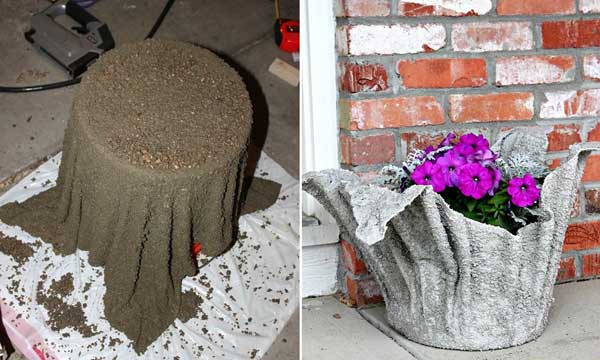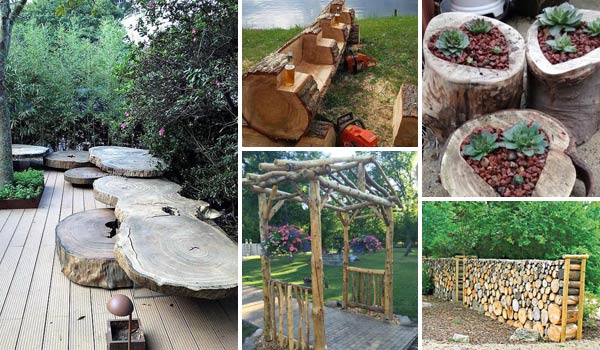19 Railing Planter Ideas For Small Balcony Gardens
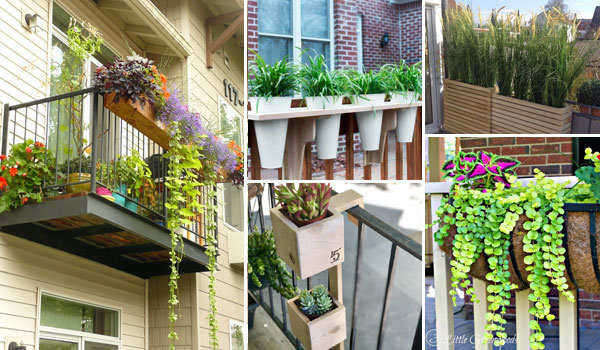
Balcony is a valuable outdoor living space for any urban resident. There, you can read a book, enjoy a cup of tea or coffee, and take a nap. Therefore, a spot like your balcony should be well decorated. Having some plants on a balcony is always a great idea as they easily turn your balcony into a peaceful and natural place to live. However, most balconies are small, narrow, and long, and there isn’t much space to hold a full-sized garden. Fortunately, railing planters are a fantastic idea to utilize the available space and greet you with blooming flowers and green plants. They form a tiny garden that increase the charm of your balcony.
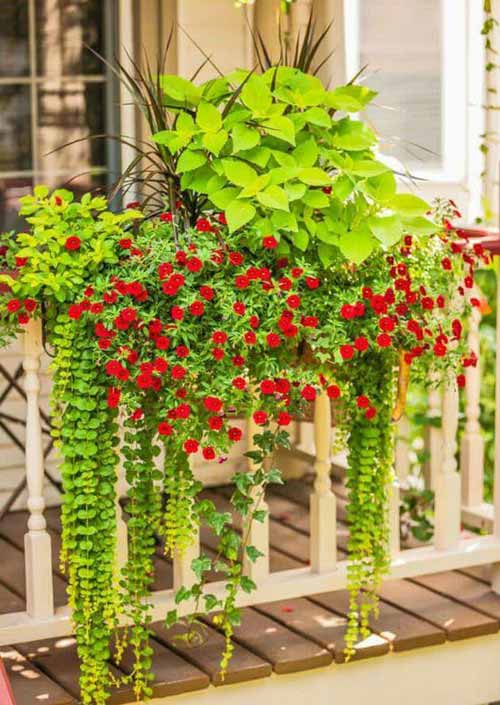
Although you can buy ready-made recycled tin cans or other plastic containers, shoe organizers and gutters are also great options to use as unique railing planters.
Which plants are suitable for railing pots? Many flowers and plants grow well in balcony planters, such as geraniums, clematis, petunias, snapdragons, ornamental grass, and creeping jenny. If your balcony doesn’t receive much sun, growing shade-tolerant plants like coleus would be fine. Low-maintenance succulents are also ideal plants. Additionally, herbs in your railing garden can infuse aroma into your balcony. Furthermore, planting dwarf vegetables like cherry tomatoes, peas, carrots, and greens is possible in your balcony railing planters. Take a look at the picture examples below:
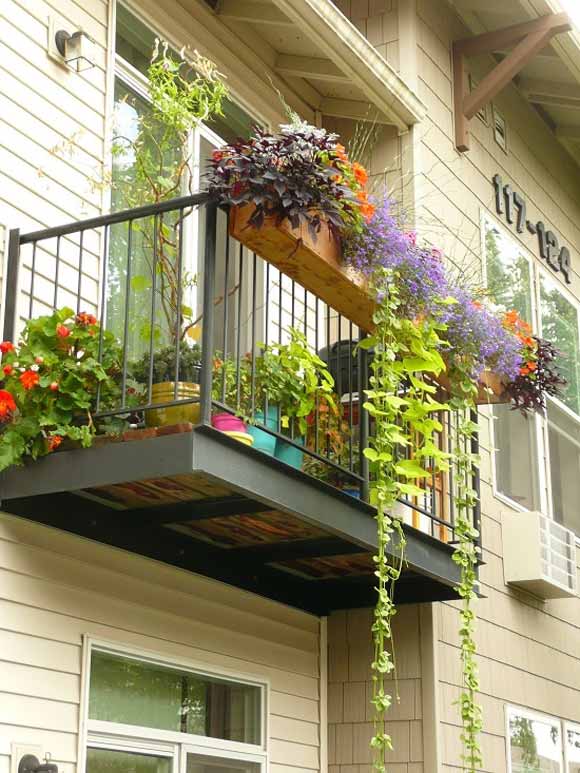
Repurpose Rain Gutters into Sleek Balcony Planters
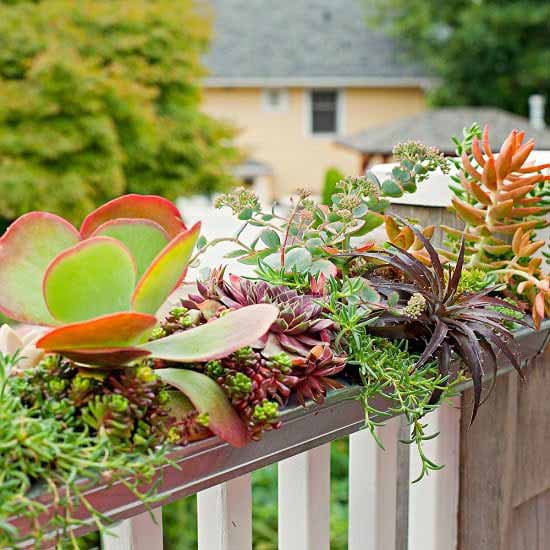
Instead of traditional window boxes, consider using rain gutters—either plastic or metal—as creative railing planters. Cut them to your desired length, seal the ends with caps, and drill small holes along the bottom for drainage.
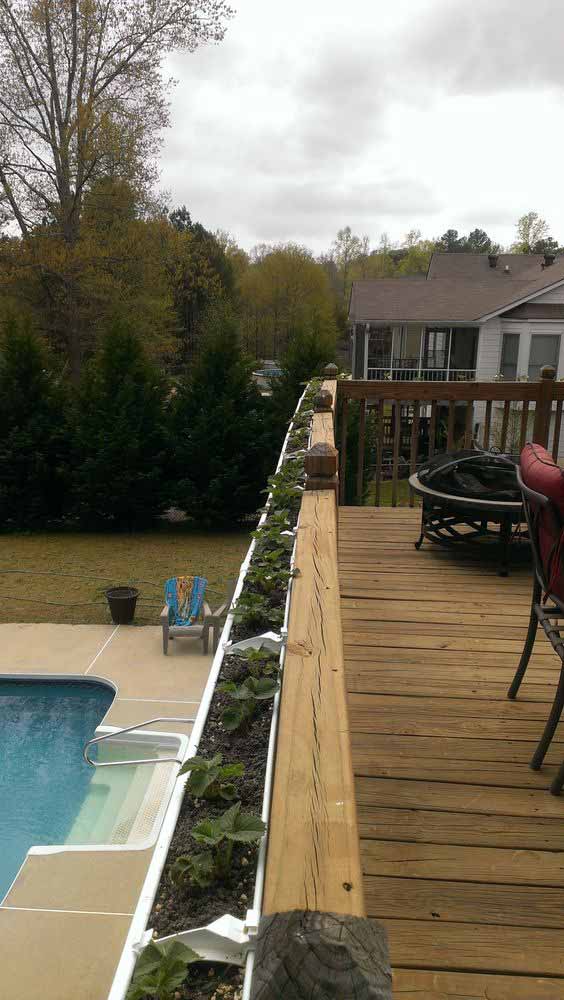
Once mounted along your balcony railing, these slim containers are ideal for growing herbs, lettuce, or colorful annuals. Their narrow profile saves space while adding a clean, modern look to your garden.
Turn Tin Cans into Chic Recycled Planters
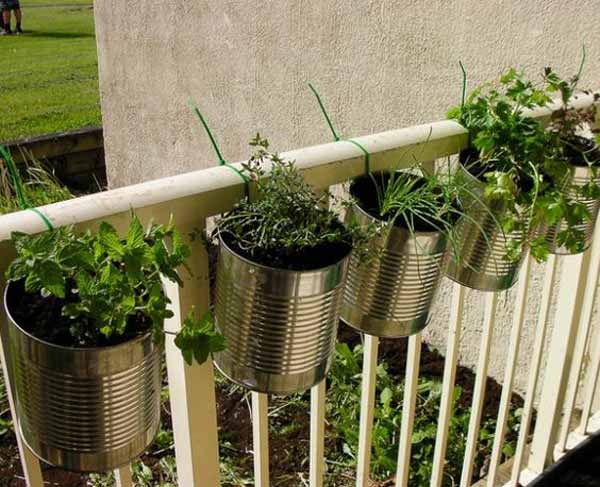
Don’t toss those coffee or soup cans—transform them into rustic railing planters. With a few drainage holes and a coat of spray paint, these everyday items become stylish, budget-friendly plant homes. Attach them to the railing with wire or metal brackets, and fill them with compact herbs, pansies, or succulents. It’s sustainability with a creative twist.
Image via: flickr.com
Upcycle Handbags and Grow Bags into Soft Planters
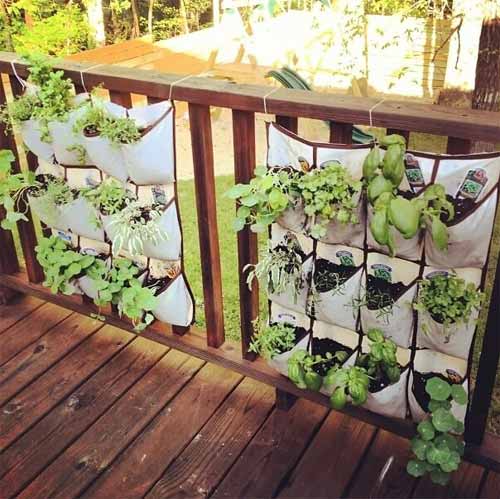
Old handbags, totes, or commercial grow bags can be surprisingly effective as railing planters. Made of flexible fabric or canvas, they’re lightweight, breathable, and perfect for growing shallow-rooted plants.
Simply secure them with sturdy hooks or rope over the railing. This option adds a soft, whimsical charm to your garden while encouraging upcycling and experimentation.
Mount White Pots into a Pine Board for a Sleek Rail Planter
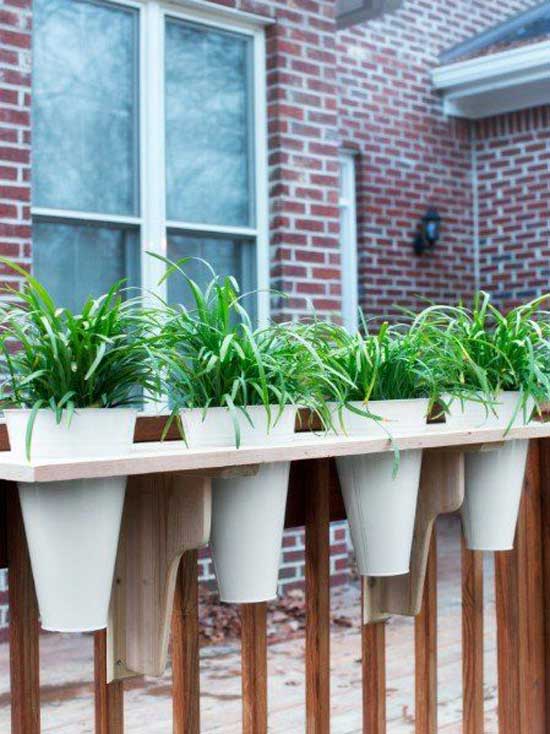
Create a clean and modern railing planter by fitting white pots into a pine board. Start by placing the pots upside down on the board to plan their positions—measure equal spacing between each one and mark it clearly.
Then, cut circular holes so the pots can sit snugly inside. Once mounted on the railing, this setup offers a tidy row of containers that’s perfect for herbs, flowers, or trailing plants. It’s a stylish DIY that balances simplicity with function. See Tutorial here.
Small Tiered Square Planter Boxes
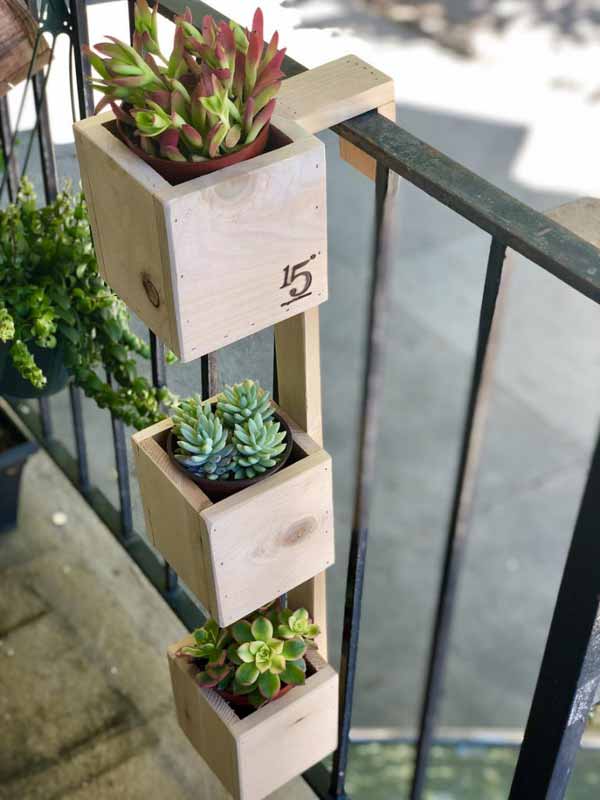
If your balcony already has some planting space but you’re looking to maximize it, try a twist on the traditional rectangular planter. By stacking three or more small square planter boxes vertically on a wooden board, you create a tiered effect that adds both greenery and visual interest.
This DIY project is simple to execute and doesn’t require much wood—use leftover materials from other projects to keep it cost-effective. The compact design is perfect for small plants, herbs, or even small flowers, offering a clever solution for tight spaces.
Install a Metal Frame to Support Multiple Pots
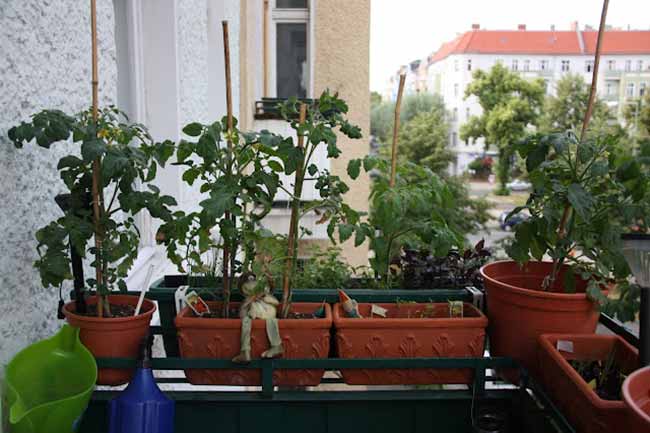
For gardeners who want structure and flexibility, a custom metal frame fixed to the balcony railing can support several pots or boxes. This approach offers more security than hanging containers alone, and the frame can be tailored to your space.
It’s perfect for mixing plant varieties, experimenting with vertical layering, or integrating trellises for climbing plants like peas or nasturtiums.
Classic Pine Railing Planter Box with Support Cradle
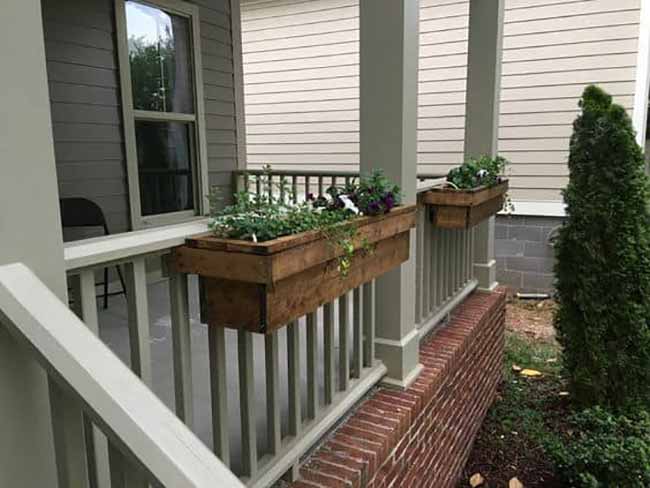
Crafted from durable pine wood and lined with plastic sheeting, this planter box offers a timeless, rustic look for your balcony.
The addition of a support cradle not only enhances its aesthetic but also ensures the planter stays securely in place, even in windy conditions. The natural finish of pine complements any outdoor setting, making it a versatile choice for urban gardeners.
Add a Wooden Lattice to Your Railing Planter
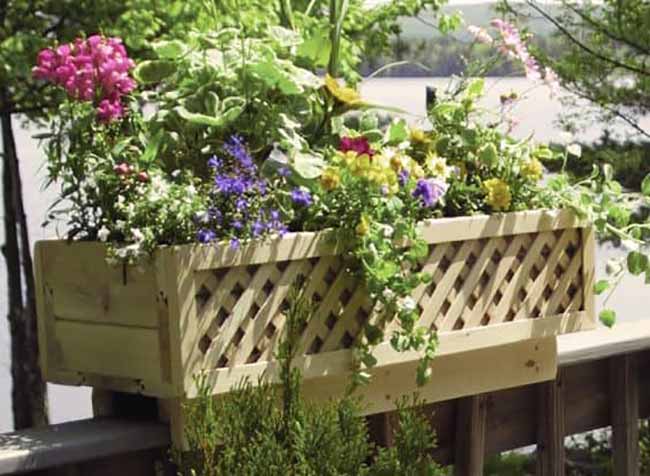
Elevate the design of your railing planter by incorporating a wooden lattice. This simple addition can be placed along the longer sides of the box or wrapped around all four sides for a more dramatic effect.
To frame the lattice and give it a more polished look, attach wooden boards to the edges of the planter box. This extra layer of texture not only enhances the appearance but also creates vertical space for climbing plants like peas or morning glories, making your planter both beautiful and functional.
Create an Angled Top Railing Planter for a Unique Look
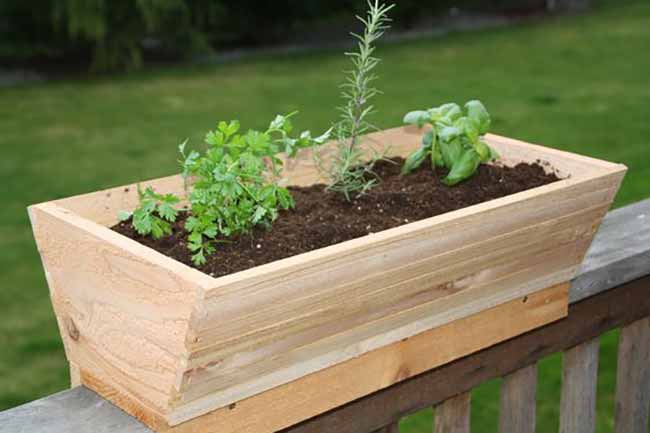
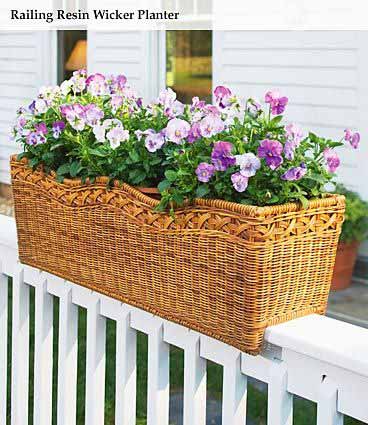
For a stylish twist on traditional rectangular planters, consider building one with an angled top. Though it requires a bit more precision and careful measurement, the effort results in a sleek, contemporary design.
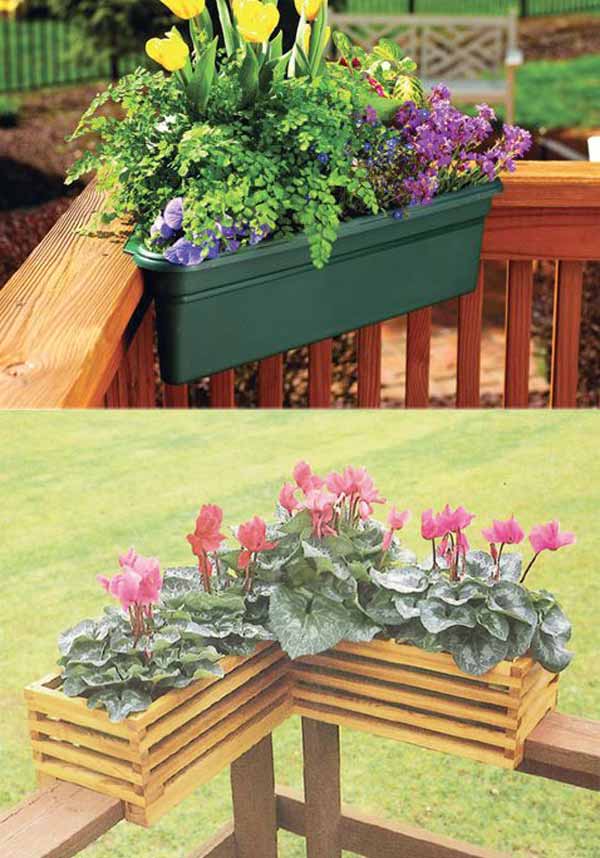
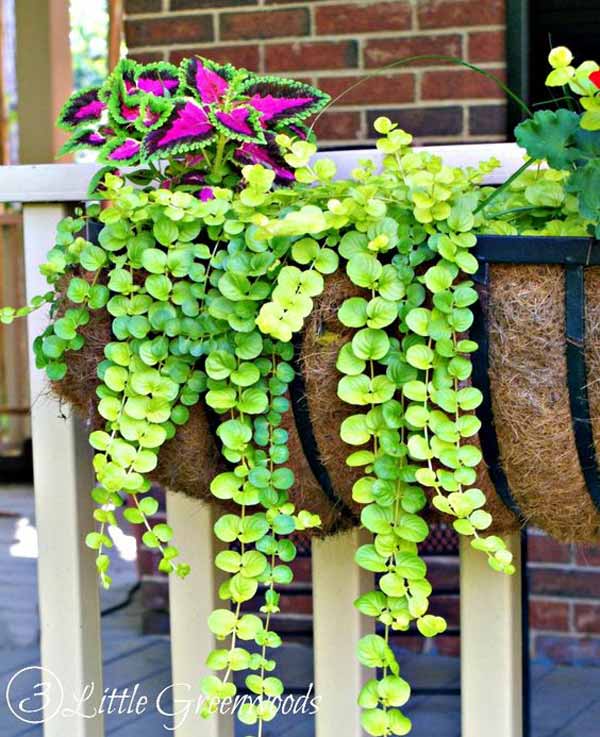
Tutorial: 3littlegreenwoods.com
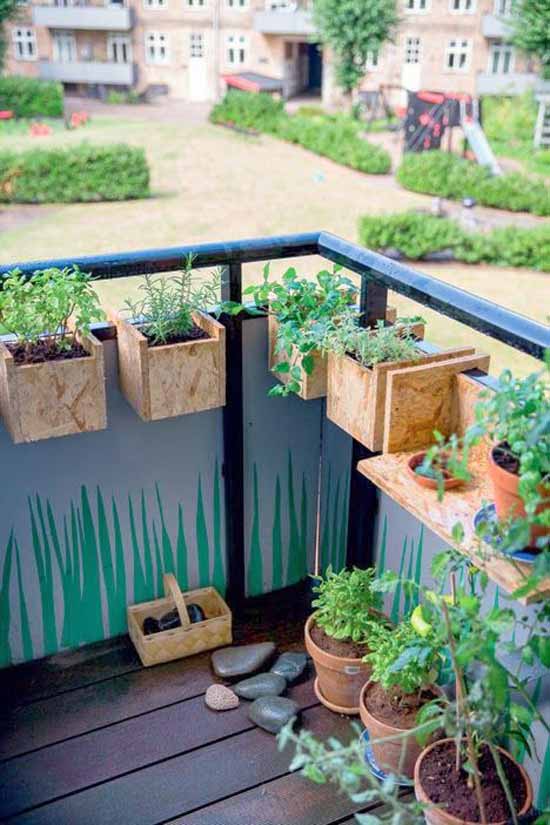

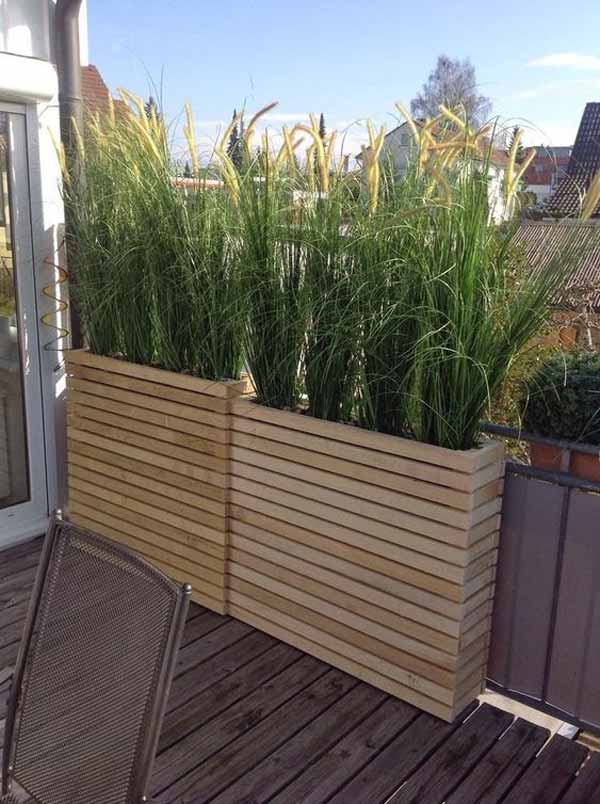
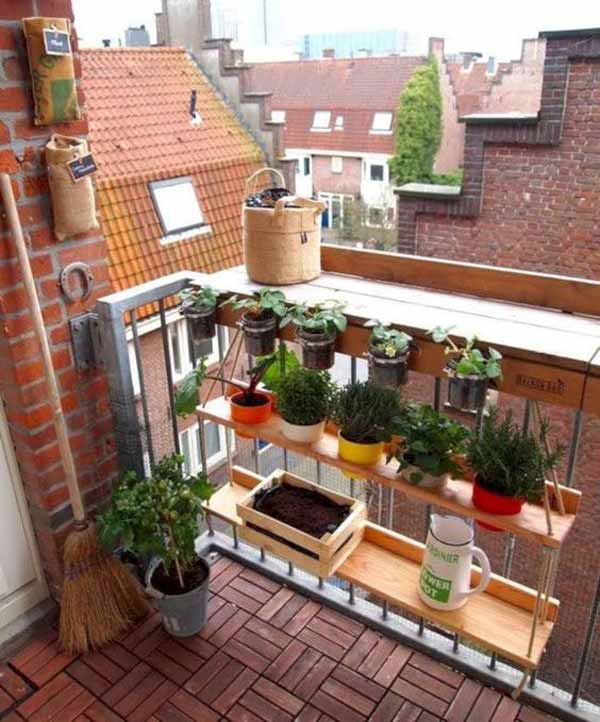
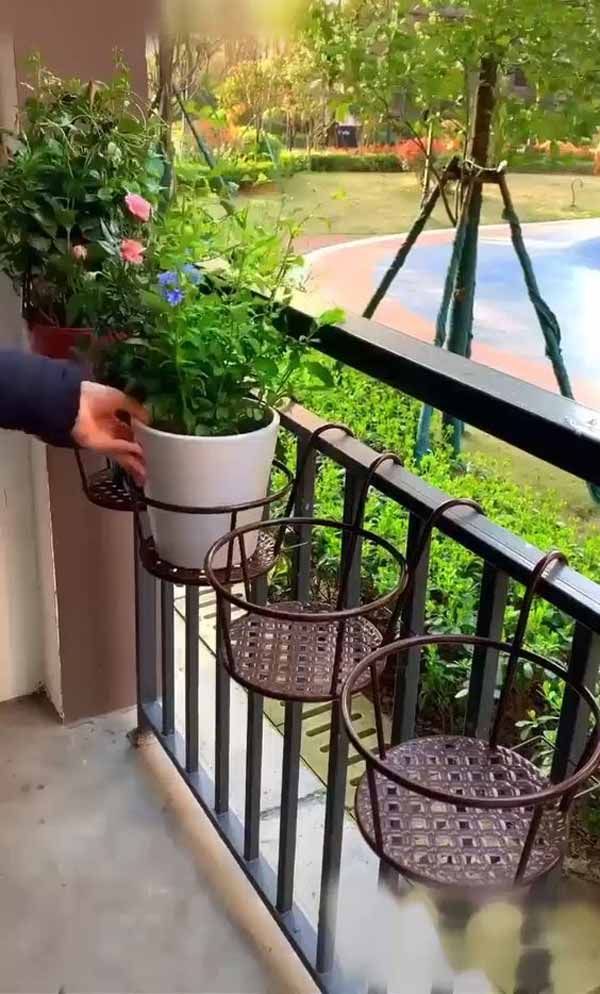
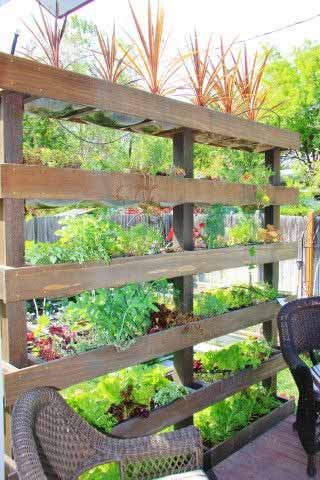

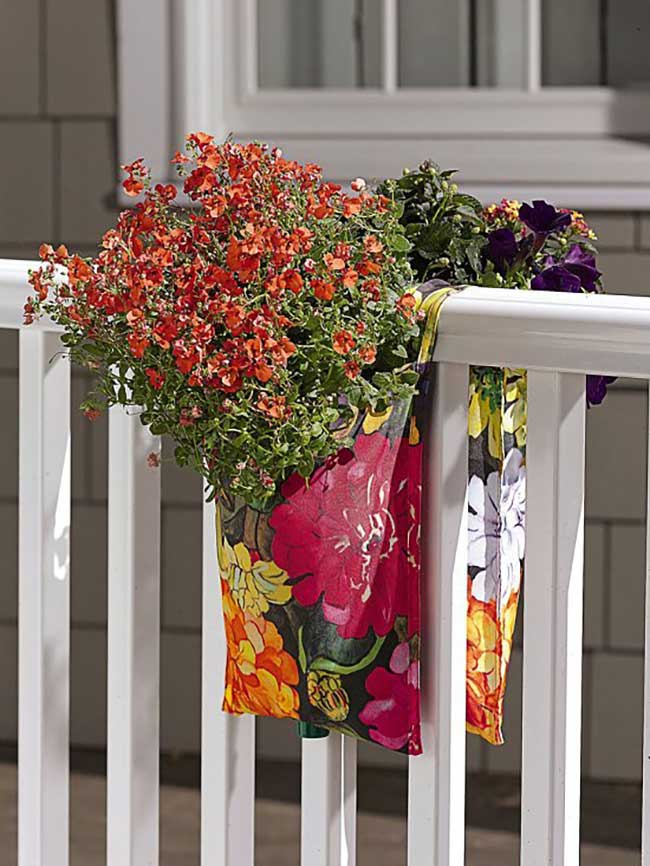
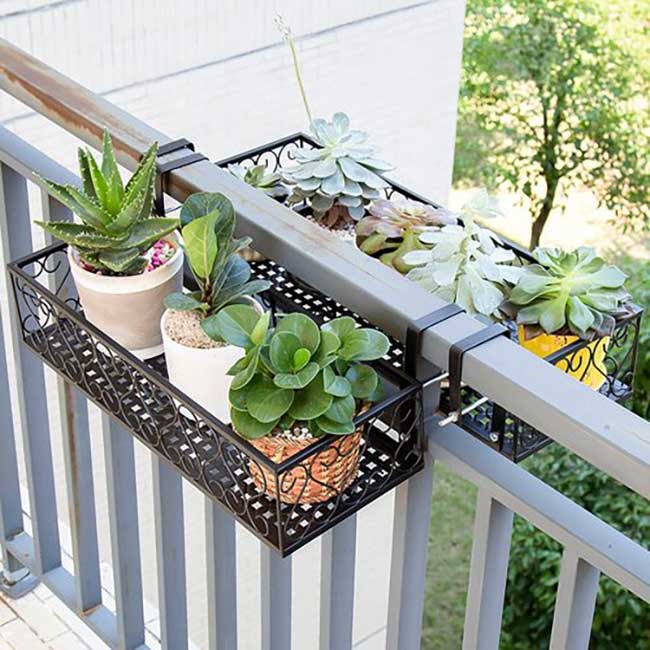
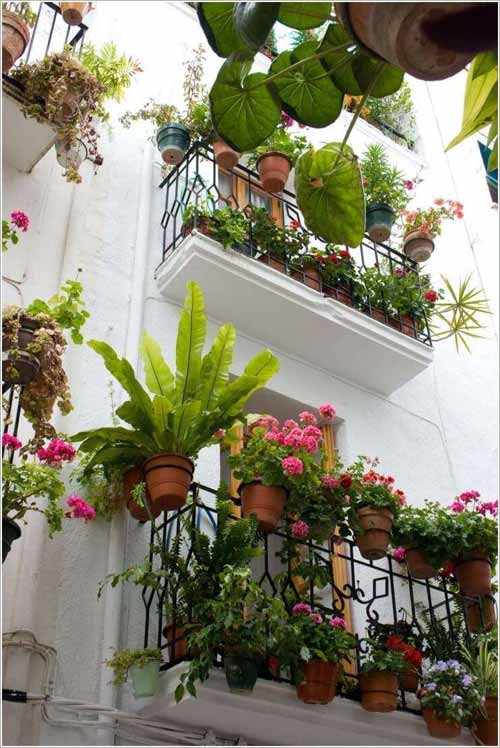
7 Ways to Hang an Over-Railing Planter Box
When it comes to hanging a planter box over your balcony railing, there are multiple methods available. From simple brackets to more heavy-duty solutions, the right choice depends on your railing type and the weight of your planter. Here’s a breakdown of the most popular options:
1. Over-the-Rail Brackets: Quick and Secure
Over-the-rail brackets offer a straightforward and effective solution for hanging your planter boxes. These L-shaped brackets are typically designed to fit most standard railings, and some models feature a hooked arm that allows you to rest your planter box without any drilling.
They are perfect for those who want a simple installation process with minimal effort, providing a secure hold for most planters. However, ensure that the brackets are sturdy enough to handle the weight of your planter, especially if it’s a larger box.
2. Hanging Holders or Baskets: No Tools, No Hassle
Hanging holders or baskets are an excellent option if you want a tool-free solution. These baskets are designed to hang over the railing using hooks, allowing for quick setup without drilling or screws.
They are usually made of durable materials such as metal or vinyl, providing both strength and weather resistance. These baskets are best for lighter to medium-weight planters, so ensure that the one you choose is appropriately sized for your plants.
3. Heavy-Duty Cable Ties: Strong, Permanent Hold
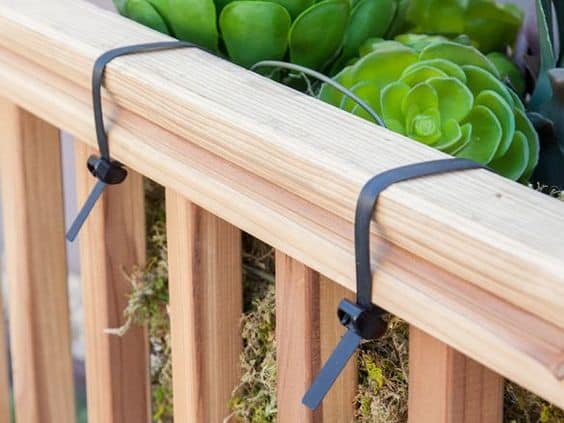
Heavy-duty cable ties are an efficient and secure method for attaching planter boxes to your railing. These ties can be threaded through eyehooks on your planter, ensuring a strong grip that prevents any shifting or movement.
Once the ties are fastened, they hold the planter firmly in place, making them ideal for windy or high-traffic areas. However, a major downside is that cable ties are permanent. If you need to move the planter, you’ll have to cut the ties and replace them, so it’s best for long-term setups where repositioning is not needed.
4. Adjustable Brackets: Flexibility for Custom Railings
For railings that don’t fit standard sizes, adjustable brackets provide a versatile solution. These brackets can be customized to fit different railing widths and shapes, making them ideal for irregular or oversized railings.
5. Chains: Robust Support for Heavy Planters
Chains are a great option for supporting heavier planters, as they provide reliable strength and durability. You can attach chains to eyehooks on the planter box and hang them over the railing.
Chains work particularly well for metal railings, as they offer a strong hold and a sleek industrial look. However, be cautious when using chains on wooden railings, as they may cause scratches or wear over time. For heavy-duty planters, chains are one of the most reliable options, ensuring your plants remain secure even in adverse weather conditions.
6. Bike Hooks: Repurpose for Heavy Planters
If you have spare bike hooks lying around, they can be repurposed to support planter boxes. These hooks are designed to hold significant weight and provide a stable mounting point for heavier planters. However, bike hooks generally require drilling into the railing, making them best suited for sturdy, wooden railings.
7. Planter Boxes with Built-in Brackets
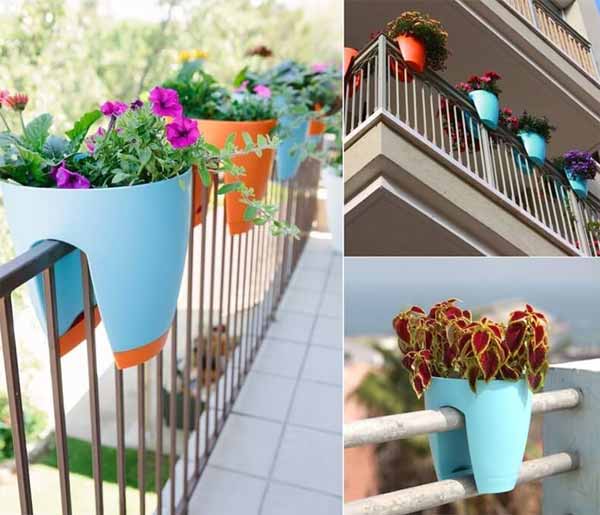
An easy and convenient option is to buy planter boxes with built-in brackets. These planters are typically made from plastic and come with integrated support systems that make them simple to hang over the railing.
They offer a hassle-free installation process and are perfect for long runs of railings that need multiple planter boxes. While these planters may not have the rustic charm of wooden boxes, they are low-maintenance and offer a practical solution for creating a vibrant railing garden.

